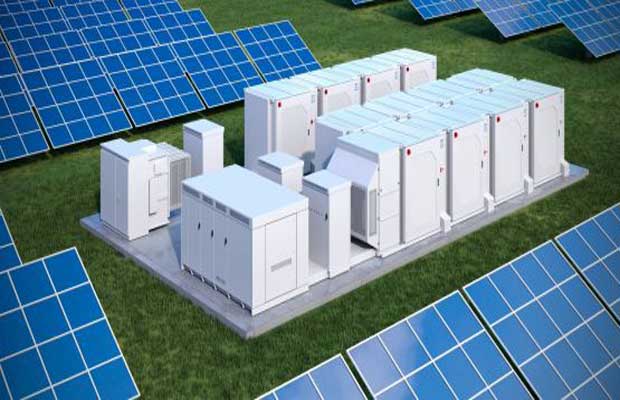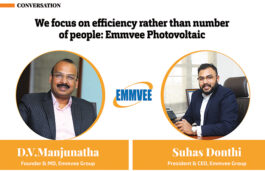Highlights :
- Given the varying storage requirements for commodities such as fruits, vegetables, fish, meat, and dairy products, it is assumed that 10% of the overall capacity will be utilized for fresh stock daily.

The Ministry of New and Renewable Energy (MNRE) has established design, performance, and testing standards for Solar Cold Storage systems equipped with Thermal Energy Storage (TES) backup. These systems primarily operate on solar photovoltaic (PV) energy, providing a sustainable solution for preserving agricultural, fishery, dairy, and pharmaceutical products.
The new regulations set performance requirements by mandating that systems support the daily precooling of 10% of the total storage capacity for two consecutive days, ensuring cold storage autonomy. With over 1,400 solar cold storage systems installed nationwide, these guidelines will serve as a reference for the Ministry of Agriculture and relevant state government departments involved in installing them. Additionally, they will aid in drafting bid documents for such projects.
These guidelines establish the basis for performance requirements, design specifications, and testing procedures for Solar Cold Storage systems with TES backup. The Solar Cold Storage system operates on a Solar Photovoltaic (SPV) system and utilizes TES as a backup for storing various agricultural, fishery, dairy, and pharmaceutical commodities. While the system is powered entirely by Solar PV as a Distributed Renewable Energy (DRE) source, it should also include a provision for grid connectivity, allowing it to switch to the grid during cloudy days.
Scope Of Guideline
These guidelines outline design specifications and performance requirements for solar cold storage systems with TES backup. These backups are available in 2 MT, 5 MT, 10 MT, and 20 MT capacities. The guidelines specify three different minimum temperature settings such as 4°C, 1°C, and -5°C
The guidelines also set temperatures for applications, based on the products such as different fruits, vegetables, pharmaceuticals, fisheries, and dairy products. The National Center for Cold Chain Development (NCCD) provides references for storing different fruits and vegetables. Given the varying storage requirements for commodities such as fruits, vegetables, fish, meat, and dairy products, it is assumed that 10% of the overall capacity will be utilized for fresh stock daily.
Solar Photovoltaic System
The guideline explained, “The SPV system generates electrical power during daylight hours, which is used to operate the cold storage system. It supplies electricity to the refrigeration system and auxiliary loads. To achieve the required voltage, current, and power output, sufficient modules should be connected in series and parallel”. The SPV system must adhere to the following specifications:
- Manufacturers must provide a 10-year warranty on solar modules, ensuring they are free from defects or failures from the date of sale to the original customer.
- PV modules should be warranted for their output peak watt capacity, maintaining at least 90% efficiency at the end of 10 years and 80% at the end of 25 years.
Electric Battery Bank for Auxiliary Components
The ministry’s latest guideline aims to enhance solar cold storage systems’ efficiency, reliability, and sustainability across various sectors, ensuring the effective preservation of perishable goods. For supplying energy to other components, the notification stated, “The battery bank supplies power to auxiliary electrical loads, including evaporator unit fans, the TES control panel, the temperature controller unit, lighting, and the data monitoring system.”
The following specifications apply:
- The battery type must be either lead-acid or lithium-ion.
- The overall auxiliary load on the battery must remain within the discharge rating specified by the battery manufacturer.
- The original equipment manufacturer (OEM) must provide a minimum warranty of five years for the battery.





























